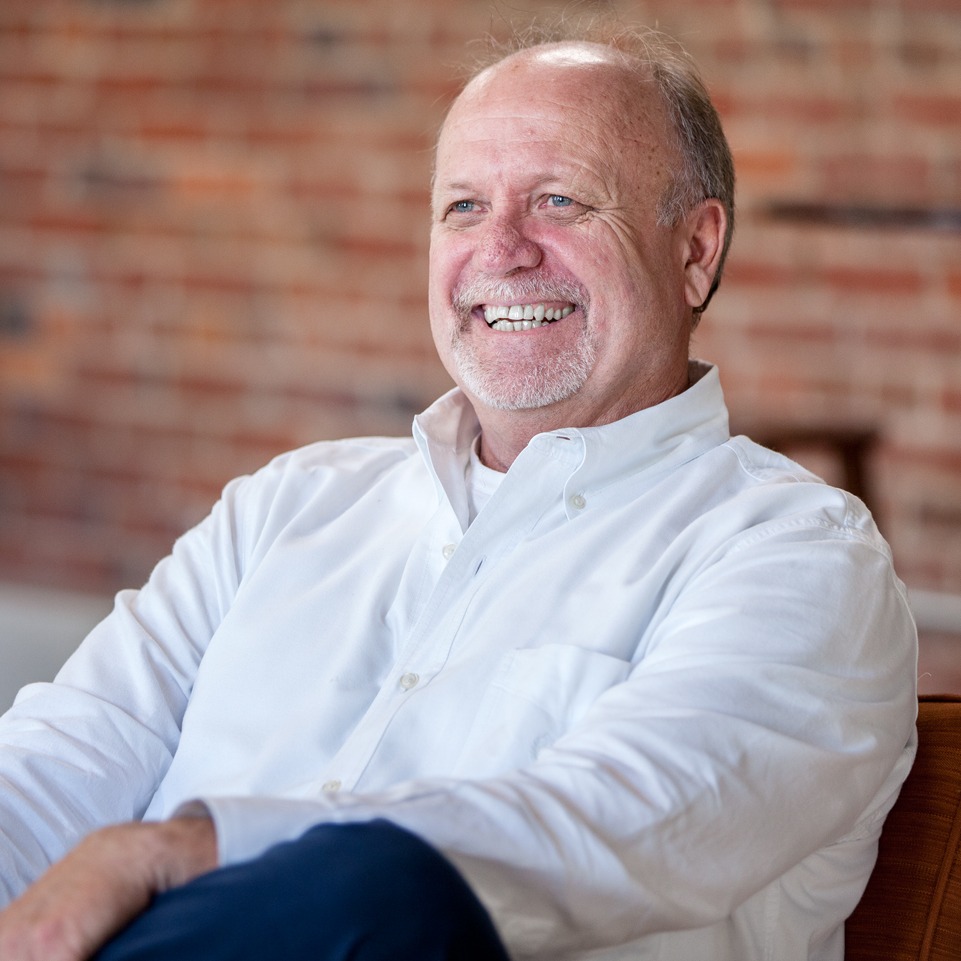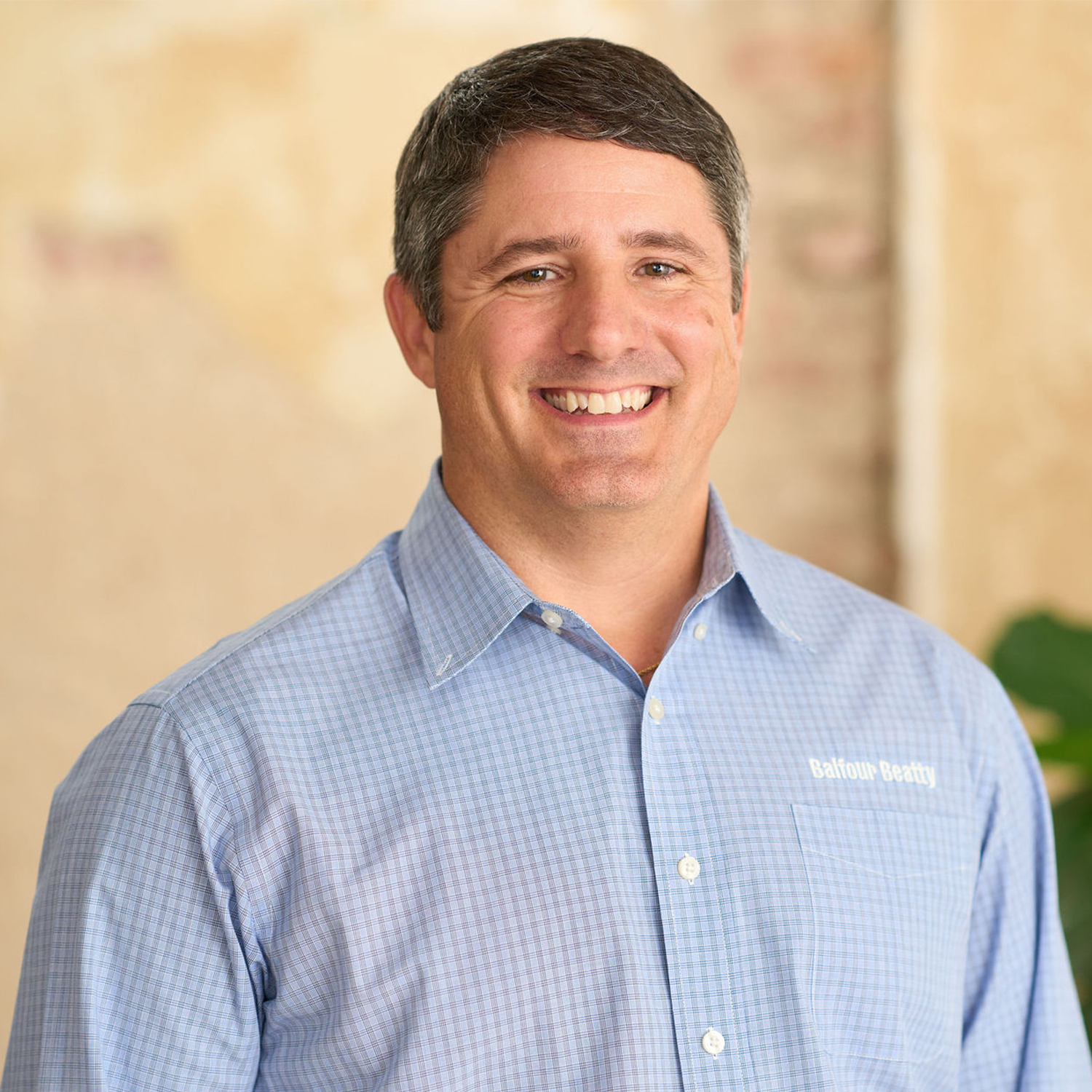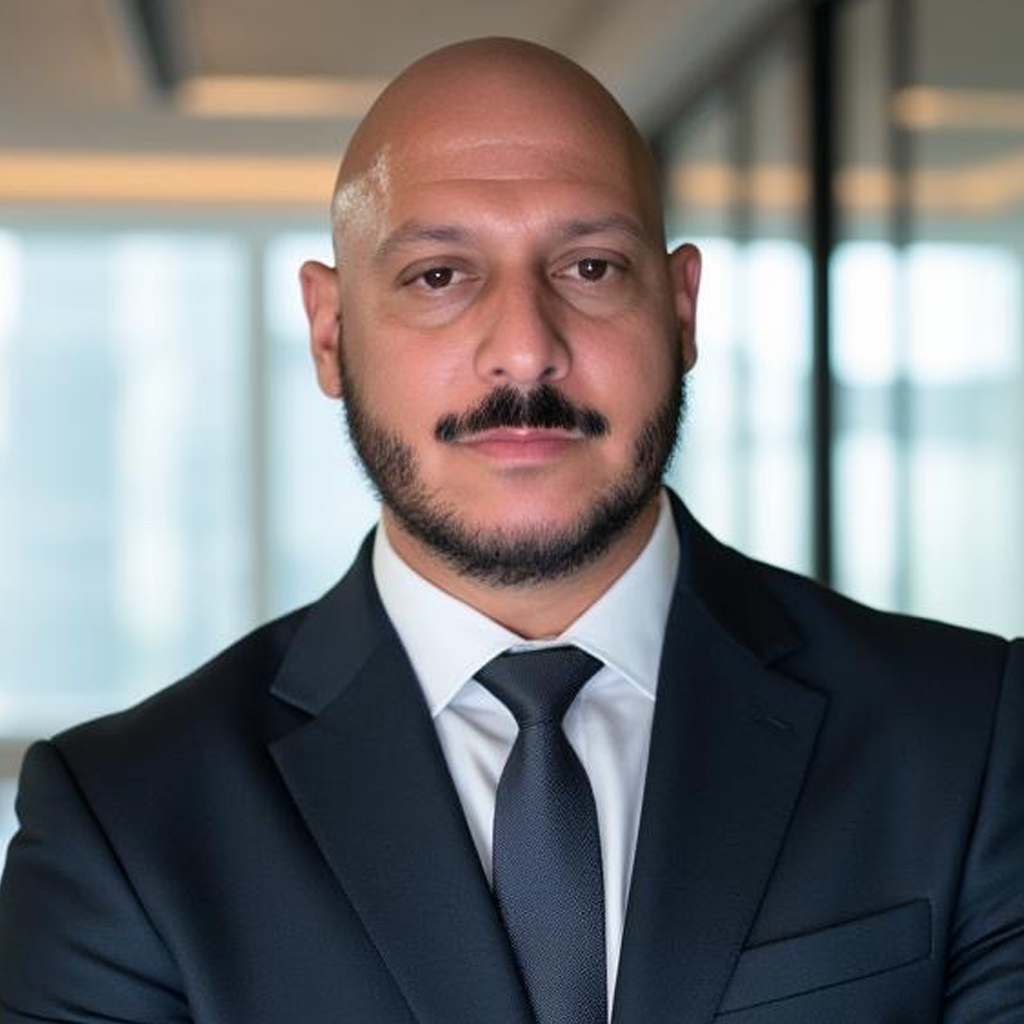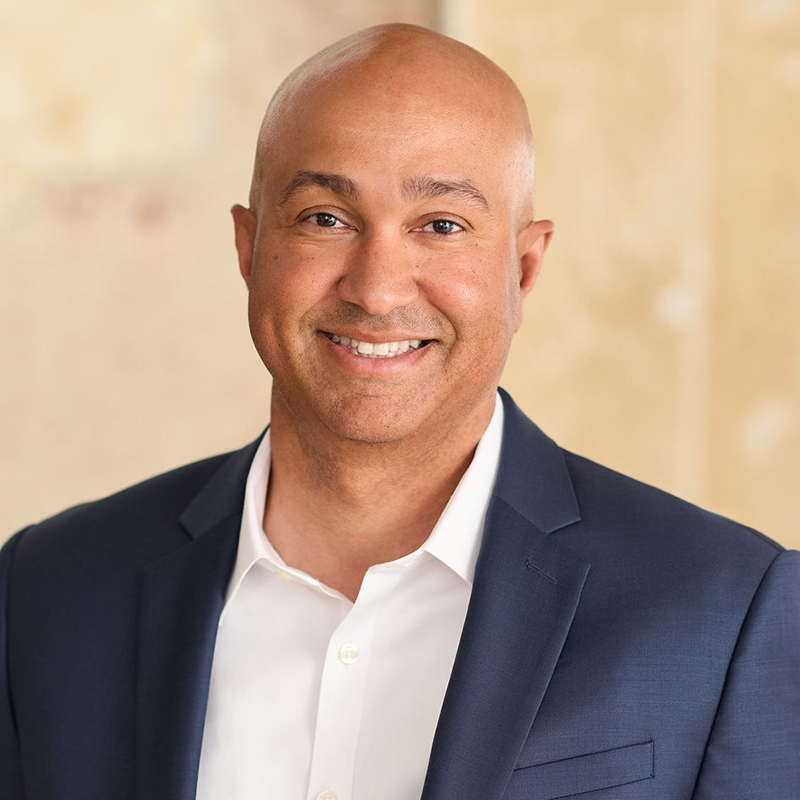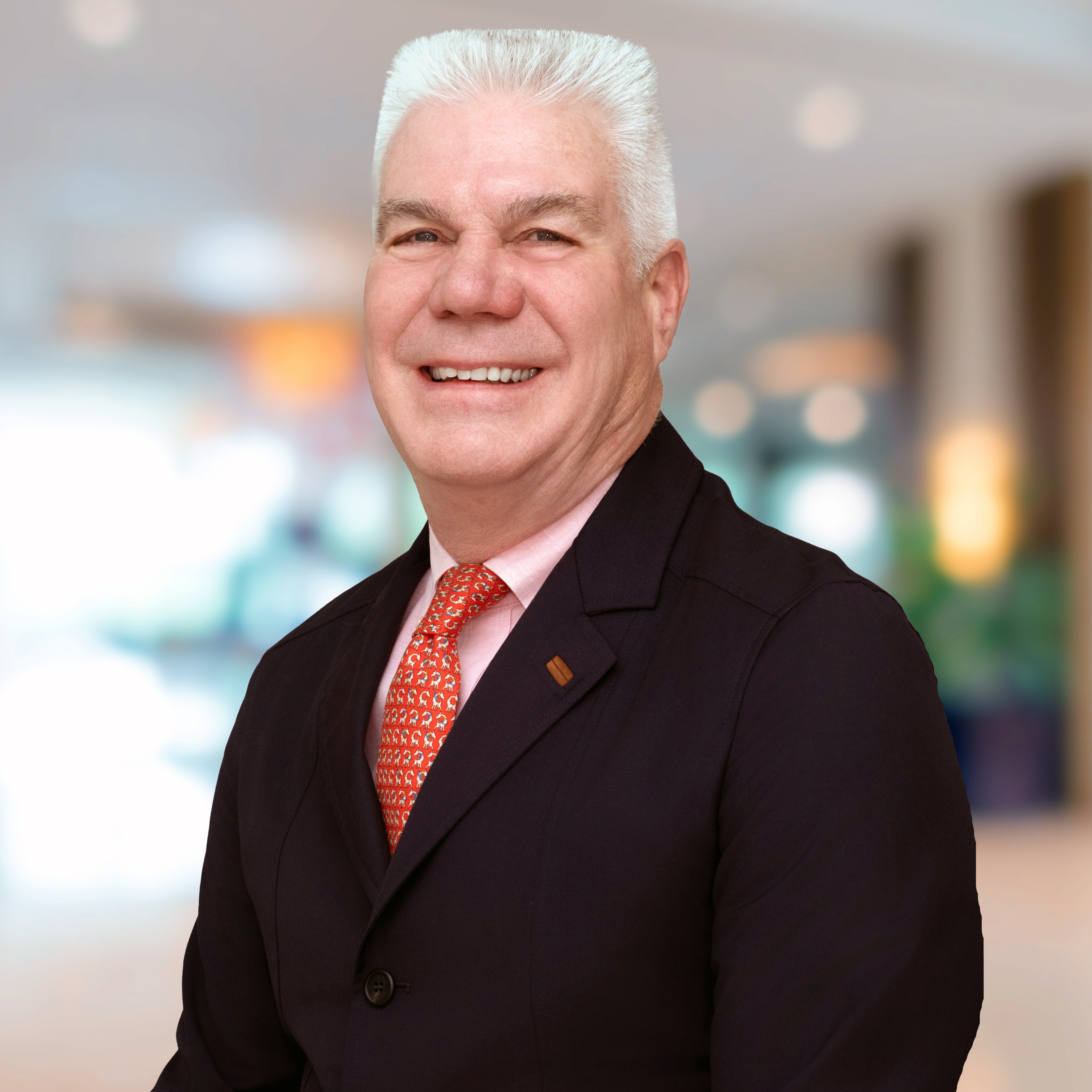
Neal Ernest
Relentless Ally
Leading With Empowerment and Accountability
For Florida Vice President of Operations Neal Ernest, construction was the family business. Having grown up watching his father work in contracting, Neal’s joining the industry was something of a destiny and family legacy, and a path he pursued with dedication.
In his 27 years in the industry since, all with Balfour Beatty and rising from assistant superintendent all the way to his current leadership position, Neal has left an indelible mark on some of our most recognizable and landmark projects like the Broward County Convention Center and multiple landmark hotels and hospitality spaces. Across Florida and even in Texas, Neal’s project and operations leadership has led to success after success, creating day-to-day project environments where our teams, trade partners and stakeholders are empowered to make informed and confident decisions.
As Balfour Beatty builds on our decades-long record of success in Central Florida, Neal’s leadership ensures that our clients in every market – hospitality, entertainment, special projects, higher education and more – know they have a trusted ally in the entire Balfour Beatty team.
It’s a Family Business
Neal’s early exposure to construction was all from watching his father—hammers-in-hand and dogged field work—but his education at the University of Florida Rinker School of Construction Science prepared him for an advanced project management track.
But Neal couldn’t let go of his hands-on roots that easily.
“I planned to graduate, spend some years in the field and then get back into project management. But all throughout school, I spent my summers wearing a toolbelt, running carpentry crews while my classmates took internships,” Neal recalls. “After a week of my first job with Balfour Beatty, I knew I wanted to be the general superintendent running big work.”
And run big work he certainly did. In the decades following, he would go on to provide exceptional client service and precision field management on monumental projects such as the Orlando Magic's AdventHealth Training Center, the Lake Nona Wave Center Hotel, the Gaylord Texan, the Loews Sapphire Falls Resort at Universal Orlando, the Cabana Bay Beach Resort and countless other projects for our most prestigious hospitality and entertainment clients in Orlando.
 The Cabana Bay Beach Resort at Universal Orlando
The Cabana Bay Beach Resort at Universal Orlando
At every step, Neal says he was surrounded by leaders who provided him with three keys to success and strategies he still implements to help project teams accomplish great things: opportunity, empowerment and accountability. Those leaders recognized Neal’s dual-threat talents as a field leader and strategic business visionary and gave him every opportunity to take on new challenges, gracefully correct mistakes and learn how to be the best possible client advocate.
Taking on Big Projects
Those opportunities to step out and lead through challenging situations started right away. On Neal’s very first project as an assistant superintendent – a landmark hospitality project that is all but a household name – he was invited to step up when the lead superintendent required emergency surgery just months before substantial completion.

“All of a sudden, I became an area superintendent. I’m sitting in all the owner’s meetings, and I was still young enough to think I could easily handle it,” Neal recalls. “It was a highly complex job on an incredibly accelerated schedule, but we successfully completed a project with thousands of workers, 24/7 operations and world-class finishes, theming and quality control.”
With a clear knack for mega project management and a talent for hospitality in particular, Neal later joined the team for the ambitious Gaylord Texan Hotel and Resort in the Dallas, Texas suburbs. When the project was put on temporary hold following the events of September 11, 2001, Neal was again able to step up and develop his project expertise and client advocacy under the tutelage of several of our strongest Texas leaders and hospitality experts like Michael Hite and Chad Brewer.
 The Gaylord Texan, one of Neal's first opportunities to learn every square foot of a mega hospitality project
The Gaylord Texan, one of Neal's first opportunities to learn every square foot of a mega hospitality project
“With the project on hold for 10 months, I took on a quasi-preconstruction role preparing for it to restart,” Neal says. “By the time it did, I knew every bit of that 2.8-million-square-foot complex and can proudly say we helped create a successful job through value engineering, schedule accelerations and proactive procurement even in a tumultuous market.”
Leading With Lean
Neal’s operations expertise also includes an extensive background in lean construction principles and a proven track record of lean successes, including early involvement with the Lean Construction Institute (LCI). While lean, as Neal sees it, seeks to address some of the inherent inefficiencies in the construction process and general contracting model, he believes its greatest potential for industry change stems from increased collaboration.
“From my involvement with LCI and lean experience on our many projects, I’ve experienced firsthand the power of getting more people involved in project decision-making,” Neal says. “More involvement at all levels paradoxically creates more efficient projects than top-down directives, but making it work requires first-rate communication, a collaborative spirit and the leadership skills to educate and empower your staff, partners and stakeholders.”
Of course, where the lean rubber meets the project challenge road can become exceptionally complex. Even so, the principles by which Neal has always led his projects still apply: set clear and immovable goals, give your teammates and clients the tools to succeed and hold every party accountable for success. “Communication” is less an element of the formula and more the substrate in which it exists, undergirding and enhancing every step of the project.

On Phase II of the Broward County Convention Center and Hotel mega project, for example, unforeseen design challenges with 160-foot structural steel trusses created a complex challenge for our team and trade partners. After disassembling some six weeks’ worth of steel work, the team had to recover—and quickly.
“Once you identify a problem or potential problem, you first have to communicate to the team that there is a problem, collaborate on a solution and continue to hold the team accountable through implementation,” Neal says. “On BCCCH, we knew our next milestone date was permanent power. Missing that date was not an option.”
Through aggressive and intentional collaboration between our team, our steel trade partner and design partners, Neal and the BCCCH project team carved a clear pathway to success. Schedules were greatly accelerated, site logistics became even more complex, but the collaborative effort paid off as the team brought the project back on track.

Loews Sapphire Falls Resort at Universal Studios in Orlando, Florida
“On every project large or small, empowerment and accountability are just two sides of the same coin. The one cannot exist without the other,” Neal says. “These are foundational principles that leaders once instilled in me and that I now pass on to all of our teammates – stand in the gaps for our people and our clients, learn from mistakes and commit to a people-first, collaborative and communicative approach that always creates success.”
Looking Ahead
As Balfour Beatty looks ahead to extending our Central Florida legacy, building on the success of projects like Manor West River in Tampa and now new opportunities at the University of Florida, operational leaders like Neal prove the strength of our relationship-driven business.
Balfour Beatty’s greater Florida portfolio is dominated by repeat business for precisely this reason: after just one project, clients come to understand that Balfour Beatty’s leaders like Neal don’t make unilateral, top-down decisions and pass the consequences on to clients. Instead, they create inclusive and rewarding environments where every stakeholder is equally empowered to share our clients’ values, equally empowered to implement creative and lean solutions and equally empowered to create success.
Read More

Tom Murray
Relentless Ally
A Client’s Best Kept Secret
Tom Murray has never encountered infrastructure he doesn’t like to build.
And he would know. With over 40 years of industry experience, Tom has seen and built it all. From underground fuel tanks to groundwater extraction systems, fiber optic duct banks, pump stations, water treatment plants and much more, Tom’s expertise and industry roots quite literally run deep. Today, as director of operations for Balfour Beatty, Tom leverages the diverse skillsets he has cultivated working on the many different facets of infrastructure that connect and power our communities.
Dedicated, decisive and dependable, Tom is widely esteemed as a builder of choice for Balfour Beatty’s preeminent infrastructure clients like the East Valley Water District in San Bernardino, California. But he didn’t earn that title overnight, having risen through the ranks the old-fashioned way—through the trades.
Tom’s humble beginnings as a masonry laborer soon beget greater estimating, project management, business development and even entrepreneurial opportunities as his career progressed. No matter the project type, Tom’s passion for infrastructure construction remained his guiding force and driving inspiration.
“I like to build stuff for people, I like to figure things out,” explains Tom, who can even be found on family vacations inspecting local water systems, enhancing his already encyclopedic knowledge of infrastructure. Indeed, Tom’s fascination with infrastructure never takes a day off.
The Stars Align in San Bernardino
As luck or perhaps destiny would have it, Tom was introduced to the East Valley Water District while working on a plant upgrade project with another contractor. Tom left a distinct impression on the client, and the client on Tom. After joining Balfour Beatty a few short years later in 2014, Tom was reunited with the East Valley Water District on what would become a signature, career-defining project for all stakeholders: the progressive design-build Sterling Natural Resource Center (SNRC).
The owner began the project with the intention of planning, designing, constructing and operating the water treatment plant to a standard-setting level of excellence. Tom’s leadership and vision were instrumental in realizing that goal at every stage of project delivery. Together, design-build manager Balfour Beatty, lead designer and engineer-of-record Arcadis and architect-of-record Ruhnau Clark Architects (collectively “Team Sterling”), delivered the net-zero project on time, on budget and with zero claims or litigation—a feat nearly unheard of in infrastructure construction.
An Infrastructure Icon
These achievements are even more impressive considering the challenges that arose during the five-year project. From a global pandemic and resulting supply chain shocks to a mega, $33 million change order executed at 60-80% design completion that upended the schedule, procurement, site design and major utilities, SNRC was a one-of-a-kind project for a one-of-a-kind team. In a testament to the power of Zero Harm, Team Sterling also navigated a gubernatorial stay-at-home order and distancing mandates while logging 800,745 total hours worked with only one lost-time incident.
Although any one of these challenges alone could have easily derailed the project, Team Sterling’s ultimate success was no surprise to Tom, who says they cultivated a strong foundation from the start through their formalized partnering process that culminated in a team Charter.
“I think trust is the biggest thing,” affirms Tom. “Developing trust amongst yourselves and having respect for one another are the best things you can do for a project to be successful.”
Today, SNRC stands as a living landmark to the realization of the East Valley Water District’s aspiration, a beacon of meaning and purpose for the local community and a signal to architecture, engineering and construction industry that the success of our work hinges not just on technical prowess but on the strength of partnerships forged. Having won over 20 industry awards to date, SNRC is one of the most highly decorated projects in Balfour Beatty history. It is also a project that echoes of Tom’s unwavering, Relentless Ally commitment to the clients and communities in his care.
“Tom’s leadership was instrumental in the construction of the Sterling Natural Resource Center. He embraced the District’s vision to make every source a resource and helped turn that dream into reality,” says Michael Moore P.E., general manager/CEO East Valley Water District. “Today, the facility is fully operational, recycling millions of gallons of water each day and generating clean energy, creating an award-winning, net-zero facility.”
A Tried-and-True Collaborator
AT SNRC and on his most recent project, the $60 million Bassett High School Stormwater Capture in La Puente, California, Tom leads our operations teams by example, modeling what it means live out Balfour Beatty’s Relentless Ally mindsets. In fact, Tom is usually the first one in the door and often the last one out. He wouldn’t have it any other way, because he takes pride in exemplifying the work ethic and commitment his parents instilled in him.
One of the reasons Tom has been an ardent proponent of collaborative contracting models is the relational foundation they cultivate that reaps decision-making efficiencies and a more enjoyable building experience for everyone. Tom’s experiences led him to pursue a formal certification through the Design-Build Institute of America (DBIA) in 2017.
“Traditional bid-build work is always a fight,” reflects Tom. “I enjoy the process of coming together as a team under a common goal. You can disagree, but the client’s end goal and making it the best it can be is the ultimate prize that everyone is working towards.”
Although Tom has four decades under his toolbelt, he’s still excited to learn new aspects of the industry, especially as it relates to sustainability which is a core tenet of Balfour Beatty’s global build to last strategy.
“When I look back over my career, I didn’t really put it together, but water resources, environmental cleanup – it’s all sustainability,” reflects Tom. “I think if there’s one thing I’m most proud of, it’s the resources I have created through building for my neighbors.”
As Tom Murray has built infrastructure icons, he has become something of an infrastructure icon himself, evolving with the needs of his communities as both a steward and trailblazer for the systems that underpin our wellbeing, opportunity and prosperity.
Read More

Ernesto Jaimes-Aguilar
Relentless Ally
A Passion for Safety
Managing safety on a major infrastructure project takes a special kind of person. One who isn’t just well-versed in policies and procedures, but someone passionate about getting people home safely.
Ernesto Jaimes-Aguilar perfectly exemplifies that passion in his role as project safety supervisor at the new Lady Bird Lake project in Austin, Texas. For Ernesto, our Zero Harm culture isn’t just about traffic cones and neon vests—it’s about living out his purpose.
“I think my purpose is helping other people, and making sure everyone gets home safely is the way I do that,” Ernesto says. “I get to help the workers, but I also help their families and friends, as well as the company.”
The Lady Bird Lake project is still in early stages but will ultimately include rebuilding a 2.5-mile section of Interstate 35 (I-35) on the south side of downtown Austin. As he works to build a safety culture on this new venture, Ernesto is prioritizing training, communication and strong relationships to set the foundation for a safe and successful project.
Safe Beginnings
Preparing a project like Lady Bird Lake is a complicated process, with safety being considered every step of the way. Many teammates and partners on the project are transferring from Oak Hill Parkway, another major infrastructure project located in the Austin area.
Despite having worked with these individuals before, Ernesto is far from complacent. Training has been top of mind for him since breaking ground on the project, ensuring that everyone who steps onto the jobsite is making safety their number one priority.
“Training is a non-negotiable, whether a teammate is fresh off another one of our projects or not,” he explains. “We want to make sure that our Zero Harm culture, our procedures and our jobsite rules are fresh in their minds.”
This training also serves another purpose: allowing Ernesto to spend time with each and every member of the team. Though he has an established rapport with many from working on the Oak Hill Parkway project, strengthening those relationships is extremely important to Ernesto in establishing a culture of safety.
“Building a friendship as well as a working relationship establishes a level of trust,” he explains. “Everyone knows they can come to me with concerns or ideas and trust that I will provide for them and make sure they have everything they need to get the job done safely.”
Safey Amid High Traffic
Another consideration of getting the Lady Bird Lake project up and running is the proximity to live traffic. Earlier this year, Balfour Beatty announced a groundbreaking safety initiative expanding OSHA’s long-established Fatal Four to include the fifth fatal risk of Live Traffic. The Federal Highway Administration estimates there are more than 100,000 vehicle crashes in work zones each year, making vehicle traffic a significant threat, especially on a project like Lady Bird Lake.
The jobsite is located in the heart of downtown Austin, along the Colorado River just south of the Texas state capital. An estimated 200,000 drivers use this segment of I-35 daily, and Ernesto is committed to getting every one of them through the jobsite without incident.
“Working in live traffic is one of the most dangerous jobs there is,” he says. “There are all types of drivers out there—some are distracted, others are speeding, others may just be confused because of a traffic switch. It’s vital that we have every precaution in place on our jobsite to get everyone home safely.”
One such precaution includes small, portable lights on workers’ personal protective equipment (PPE). These lights, manufactured by Guardian Angel, are equipped with high-powered LEDs on all sides, enabling drivers to see workers from as far away as five miles. Innovative technologies like these are growing more common on jobsites across the U.S., and making great strides in safety.
In addition to outfitting crews beyond the standard PPE, Ernesto also trains every member of the team to always remain alert on the jobsite.
“We prepare our jobsite and our crews as much as we possibly can, but we also have to be prepared for the unexpected,” Ernesto explains. “The training we provide is crucial, as well as the relationships we’ve built, which remind us to look out for each other.”
Breaking Down Communication Barriers
These strong relationships keep the lines of communication open, something that is vitally important to maintain a safe jobsite according to Ernesto.
“There’s the saying that you’re either falling together, or you’re falling apart,” he says. “When teams don’t communicate, they won’t be on the same page about the operations of the day, and something could get missed or overlooked. That’s how things fall apart.”
Maintaining communication isn’t always as simple as making sure teams are speaking to each other. There are logistical barriers that Ernesto is passionate about overcoming.
One such barrier is that of language. Ernesto is fluent in both English and Spanish, allowing for better communication with many members of the team.
“For many of our teammates, English is not their first language. Communicating exclusively in English can lead to misunderstandings on the jobsite,” he says. “When any member of our team doesn’t understand exactly what’s being asked of them, that presents a safety concern.”
There are also logistical barriers to communication due to the nature of jobsites. A member of the night crew at Lady Bird Lake identified one such barrier: noise.
The team working overnight on the project is often operating alongside trucks that are bringing in or hauling off materials. These trucks make it difficult for members of the team to get each other’s attention, forcing them to shout at each other in a way that was often ineffective. The crew approached Ernesto with an easy solution.
“They suggested outfitting the crew with air horns to make it easy to get each other’s attention,” he says. “It’s a simple, inexpensive solution that will make their jobs safer and easier and I’m grateful that my teammates trust me enough to come to me with feedback, especially when it makes the jobsite safer for everyone.”
Called to Safety
As Lady Bird Lake continues to take shape in the heart of Austin, Ernesto’s approach to Zero Harm serves as a powerful reminder that protecting our teammates goes beyond compliance and checklists. By prioritizing meaningful connections, fostering open communication and remaining receptive to his team’s innovative safety solutions, Ernesto has established a culture where everyone feels valued, heard and empowered to speak up.
In an industry where the stakes are literally life and death, Ernesto’s dedication stands as an example of how genuine care for people transforms safety from a responsibility into a calling.
Read More
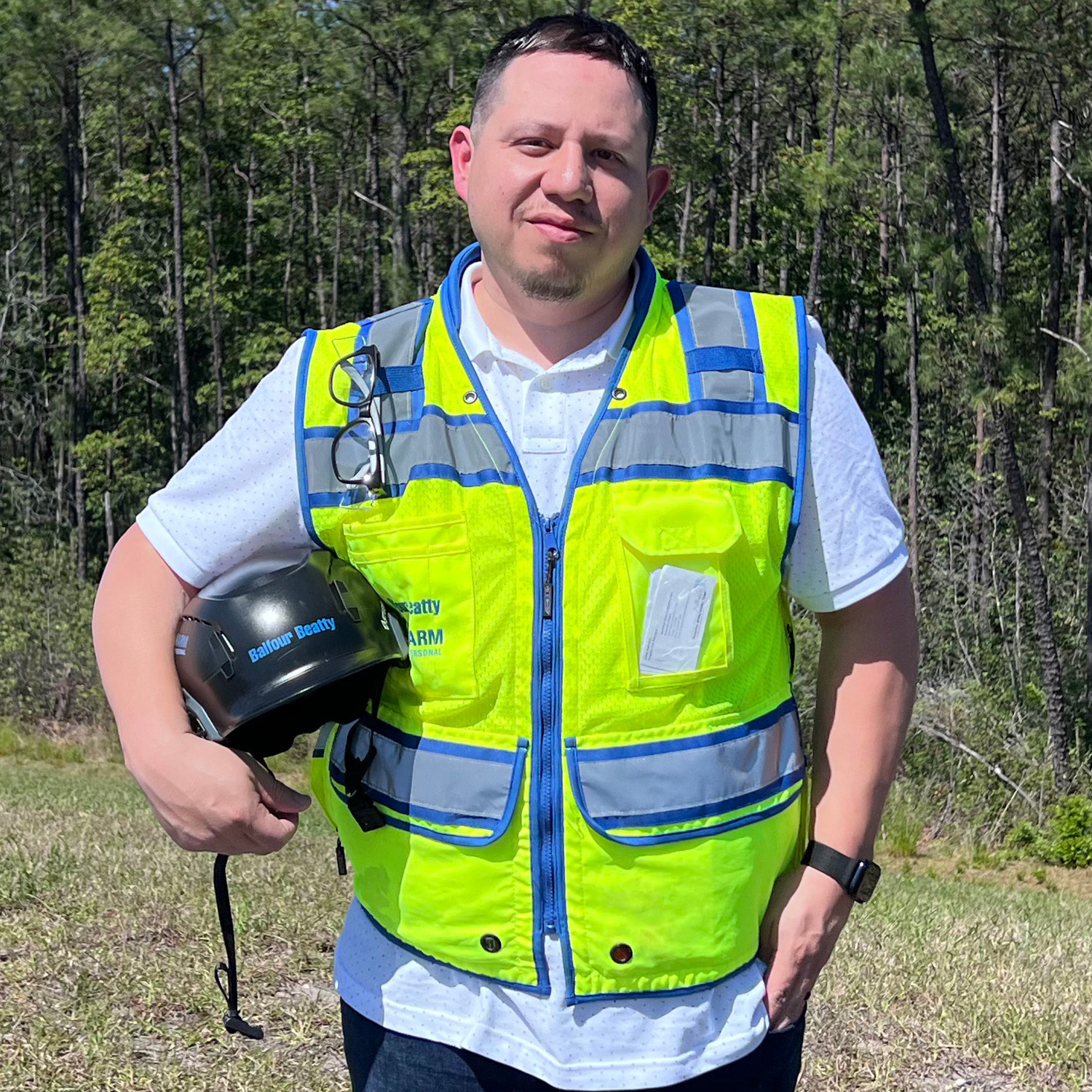
Alex Ramos
Relentless Ally
Striving for Safety
When thinking of construction safety, images of hard hats, protective glasses and neon vests come to mind. But safety encompasses so much more than personal protective equipment—every choice counts, and a split-second decision on a jobsite can change a life forever.
Alex Ramos, a safety, environmental and health manager for our civils operations in the Southeast, is passionate about making safety personal, constantly seeking to enhance his safety expertise and ensuring that all of his teammates, when faced with difficult decisions, are equipped to make the right choices.
Managing Across Miles
Balfour Beatty’s industry-leading commitment to safety was the primary factor that drew Alex to pursue a career with Balfour Beatty. Before joining our team, he worked for a safety consulting firm, but Balfour Beatty’s steadfast dedication to Zero Harm stood out from the pack and led him to join the business in 2017.
Today, Alex travels throughout the Southeast conducting safety audits, offering safety management guidance and providing ongoing training for our teammates and trade partners. Whether he is at our Harkers Island Bridge Replacement project in Harkers Island, North Carolina, the Effingham Parkway project in Rincon, Georgia, or any of the large-scale infrastructure projects on which he oversees safety, Alex can always be found with his sleeves rolled up, working tirelessly to ensure our teams and surrounding communities stay safe.
On any given day, Alex is responsible for managing safety across 10 or more jobsites in multiple states. Unlike a high-rise development in which workers remain within a relatively small geographic radius, crews on civil infrastructure projects are often spread out across many miles. This might make the task of managing safety daunting to some, but Alex has honed his training and audit practices to ensure no safety issue is overlooked. Many of Balfour Beatty’s safety requirements exceed those of the Occupational Health and Safety Administration (OSHA), and Alex believes in his teammates’ leadership to maintain safe jobsites.
“Safety is more than just an aspect of what we do, it’s deeply woven into the culture at Balfour Beatty,” says Alex. “When it comes to keeping our jobsites safe, the key is teamwork. Just as it takes a team to complete a construction project, it takes a team to make sure each and every person on our jobsite and in the surrounding community stays safe.”
Alex is a firm believer that communication is the foundation to safety. Although Alex regularly visits the jobsites he manages, he can’t be everywhere at once. Because of this, he relies heavily on personal touchpoints with his teammates. Alex ensures that everyone on-site is empowered to contact him with questions or concerns but also trusts project engineers, project managers, superintendents and forepeople to effectively monitor safety.
While it is easy to get caught up in the minutiae of day-to-day operations, Alex encourages his teammates to regularly step back and look at the bigger picture of safety. Through a three-question call-and-response at the beginning of every meeting, Alex helps keep his teammates focused on safety fundamentals.
Question: Whose job is safety?
Answer: Mine.
Question: Are you committed to “Zero Harm”?
Answer: Yes.
Question: Who has the authority to stop work because of a safety concern?
Answer: I do.
“Keeping those three questions at the forefront of everyone’s mind ensures that we are all on the same page,” says Alex. “Whether I am on-site or not, our teams make sure that safety is always effectively communicated.”
Making Safety Inclusive
One of the most important steps to getting on the same page is ensuring everyone on our jobsites understands safety materials. According to the National Association of Home Builders, nearly one in three construction workers identify as Hispanic/Latinx, and approximately half of construction laborers identify as Hispanic/Latinx. Translations of these essential materials allow our teams and partners to make informed, safe choices when faced with split-second decisions.
Alex, who is fluent in Spanish, has also gone above and beyond his day-to-day responsibilities by helping translate company-wide safety materials such as Toolbox Talks, training materials, jobsite signage and more. His efforts ensure we communicate with precision and accuracy to our diverse project teams and trade partners across our entire U.S. operations.
“These materials are vital to the success and safety of our projects. We can’t afford for anyone to miss this information,” Alex says. “Our teams need to be able to read and understand the information. Translating them is one way to make sure that’s possible.”
The Spanish translations of safety materials have been successful in maintaining greater cohesion and consistency for Balfour Beatty teams across the nation. Alex’s previous role as a safety consultant gave him an understanding of unique demographic and dialect needs across different regions, and he hopes to see safety materials translated into more languages in the future.
Continuing Safety Education
Alex’s passion for safety and desire to continue learning have inspired him to advance his education. Most recently, Alex earned his Associate Safety Professional (ASP) certification, a prerequisite of which was earning his associate degree in construction. The degree and certification processes were not easy; Alex studied and took classes on his own time, learning valuable lessons he brings with him each day to our jobsites.
“Ongoing safety training is crucial to our goal of achieving Zero Harm,” says Eric Yates, regional safety, environmental and health manager. “Alex’s initiative in pursuing and achieving the ASP certification demonstrates his continued commitment to improving both himself and our overall safety performance.”
Though proud to have achieved his ASP certification, Alex is far from finished. “I never dreamed I would get my degree or certification, but now that I know I can do it, why would I stop here?” He is excited to tackle his next endeavor: earning his Certified Safety Professional (CSP) certification. The first step? Completing his bachelor’s degree.
An inclusive safety leader who is continuously raising the bar in our pursuit of Zero Harm, Alex Ramos knows first-hand that choices made in a split-second can save a life. And on his watch, those choices are sure to be safe ones.
Read More

Keith Nixon
Relentless Ally
Paving a Legacy Across the Southeast
Keith Nixon doesn’t have a crystal ball to predict what’s on the horizon for mega infrastructure projects. But with 35 years of industry experience spanning the full gamut of preconstruction and operations, a track record of trusted partnerships and leading expertise in collaborative contracting models, he doesn’t need one.
As business development director for Balfour Beatty’s infrastructure operations in the Southeast, Keith channels that experience into forecasting the future—how to accurately price it, how to adequately staff it and how to effectively build it to last for his clients and communities. It’s a one-of-a-kind role that demands a unique blend of intuition, precision analysis and strategic problem solving, and no one is better suited to fill it than Keith.
Since joining Balfour Beatty in 1999, Keith has played a vital role in shaping the evolution of our infrastructure business in the Southeast. His legacy is paved into the numerous interstates, roads and bridges Balfour Beatty has delivered in the Carolinas and Georgia—projects totaling nearly $1.7 billion that continue to shape how people live, work, travel and play.
Whether he helped bring them to life in the field, behind a computer crunching thousands of numbers or in a combination of both roles, Keith’s impact on our business, industry and communities is undeniable.
A Trusted Voice in Collaborative Contracting
As Keith’s career evolved, so too have the skillsets he brings to his projects and partners. As collaborative contracting models began to take root in the public sector, Keith recognized a need to become well-versed in design-build and progressive design-build, two of the leading types of collaborative models. Like anything Keith endeavors, he set out in earnest to gain not just an understanding but a mastery. He became involved with the Design Build Institute of America (DBIA) and assumed the leadership role over Balfour Beatty’s Southeast infrastructure alternative delivery operations in 2017.
“While public clients have historically been slower to adopt collaborative models than in the vertical buildings sector, I recognized a growing appetite for their application due to faster procurement, improved risk mitigation, better cost management, early collaboration and other benefits as compared to traditional bid build,” Keith recalls.
Firsts at Fayetteville
Keith put those skills to the test as design-build manager on the I-295 Fayetteville Outer Loop project in Fayetteville, North Carolina. From the outset, the project faced significant delays due the North Carolina Map Act, which required the North Carolina Department of Transportation (NCDOT) to compensate landowners for properties included on future transportation maps. As the NCDOT addressed Map Act-related settlements and budget adjustments, the project was effectively suspended.
Compounding these issues, Hurricane Florence made landfall in September 2018, resulting in a catastrophic, 500-year flood event to the corridor connecting I-95 and Fayetteville Outer Loop. At the time, the Fayetteville Outer Loop project design was only planned to withstand a 50-year flood event. In the wake of the devastation, former North Carolina Governor Roy Cooper emphasized the importance of resilient infrastructure to the state’s rebuilding efforts.
In response, Keith partnered with the owner to proactively propose improvements bringing that segment of highway to a 100-year design standard. His initiative sparked broader conversations about the project’s untapped potential, ultimately leading to the inclusion of additional segments of I-95. Over the next 18 months, the project team successfully negotiated and integrated the expanded scope through a progressive design-build approach. The project grew from $129 million to $240 million in what became the largest change order and the first use of progressive design-build in NCDOT history.
“It was a win-win,” Keith recalls. “Balfour Beatty received critical time extension, and the owner was able to accelerate construction of I-95 by 15 years and bring it up to required standards. It was a truly collaborative effort.”
Moreover, the change order also reduced risk for both Balfour Beatty and the client. Because the change order was processed as a lump sum, it reduced our risk of incurring quantity overruns and the client’s risk of cost overruns.
Balancing Risk, Research and Reason
Balfour Beatty has gone on to procure additional collaborative contracts with NCDOT, including our largest regional project to date, U.S. 70 James City. Although Keith estimates that approximately sixty percent of infrastructure opportunities will soon be procured under collaborative models, many hard-bid and other traditional delivery opportunities still abound.
No matter what the delivery model, Keith has his eye fixed firmly five to seven years into the future, assessing every opportunity through a disciplined lens of risk tolerance, margin health and other critical decision factors that ensure Balfour Beatty achieves sustainable business growth.
While Keith bases his proposals on many known quantities, he also contends with much that is unknown. Due to market and supply chain volatility, a project priced two years ago at $100 million could easily have swelled to $200 million today. Keith’s longstanding relationships in the design and engineering communities as well as with industry associations such as the Associated General Contractors of America (AGC) empower him to better anticipate these uncertainties in an industry that is becoming ever-more dynamic by the day.
Keith’s precision proposals are a powerful advantage in procuring work across every delivery type, but he is quick to credit Balfour Beatty’s integrated capabilities as the driver of success in his final bid numbers.
“You win with shorter schedules. You get shorter schedules by understanding the scope of work better than the competition, maintaining stronger relationships with the subcontractors who have solid production histories and then pricing the job correctly,” affirms Keith. “It’s about having the right leaders on the ground with the right blend of skills.”
An Architect of Change
A respected visionary within Balfour Beatty and the construction industry at large, Keith Nixon is an architect of change and an advocate for progress. His career – and the projects he has touched – are a testament to value of cultivating diverse skillsets, establishing trusted partnerships and leading with clarity and consistency.
Read More

Kevin Jolin
Technical Systems Director, US Rail
Relentless Ally since 2023
Kevin Jolin is a trusted and respected business leader with more than 20 years of experience spanning technical and program management, systems integration, operations, business development and product support. As the technical systems director for Balfour Beatty’s US Rail operations, Kevin leads complex infrastructure programs with a focus on operational excellence, collaborative leadership and quality execution.
Since joining Balfour Beatty, Kevin has been a major contributor to the successful completion of the system, traction power and SCADA packages for the Massachusetts Bay Transportation Authority Green Line Extension and the notable Los Angeles International Airport’s (LAX) Automated People Mover (APM), where he serves as technical advisor. On the Caltrain Design-Build Electrification project, his leadership has been instrumental in the successful interconnection, testing and commissioning of 38 electrical facilities across a 52-mile corridor, including substations, switching stations and wayside power cabinets. In addition, Kevin also provides organizational support for Balfour Beatty’s Total Power Group manufacturing operation.
A former U.S. Marine, Kevin brings discipline, focus and strategic insight to every engagement. He is deeply committed to team development, organizational ethics and continuous improvement.
Kevin is pursuing a Bachelor of Science in Electrical Engineering at Arizona State University and holds additional academic credentials in business management and electrical engineering technology. He is an active member of the Project Management Institute and the International Council on Systems Engineering.
Read More
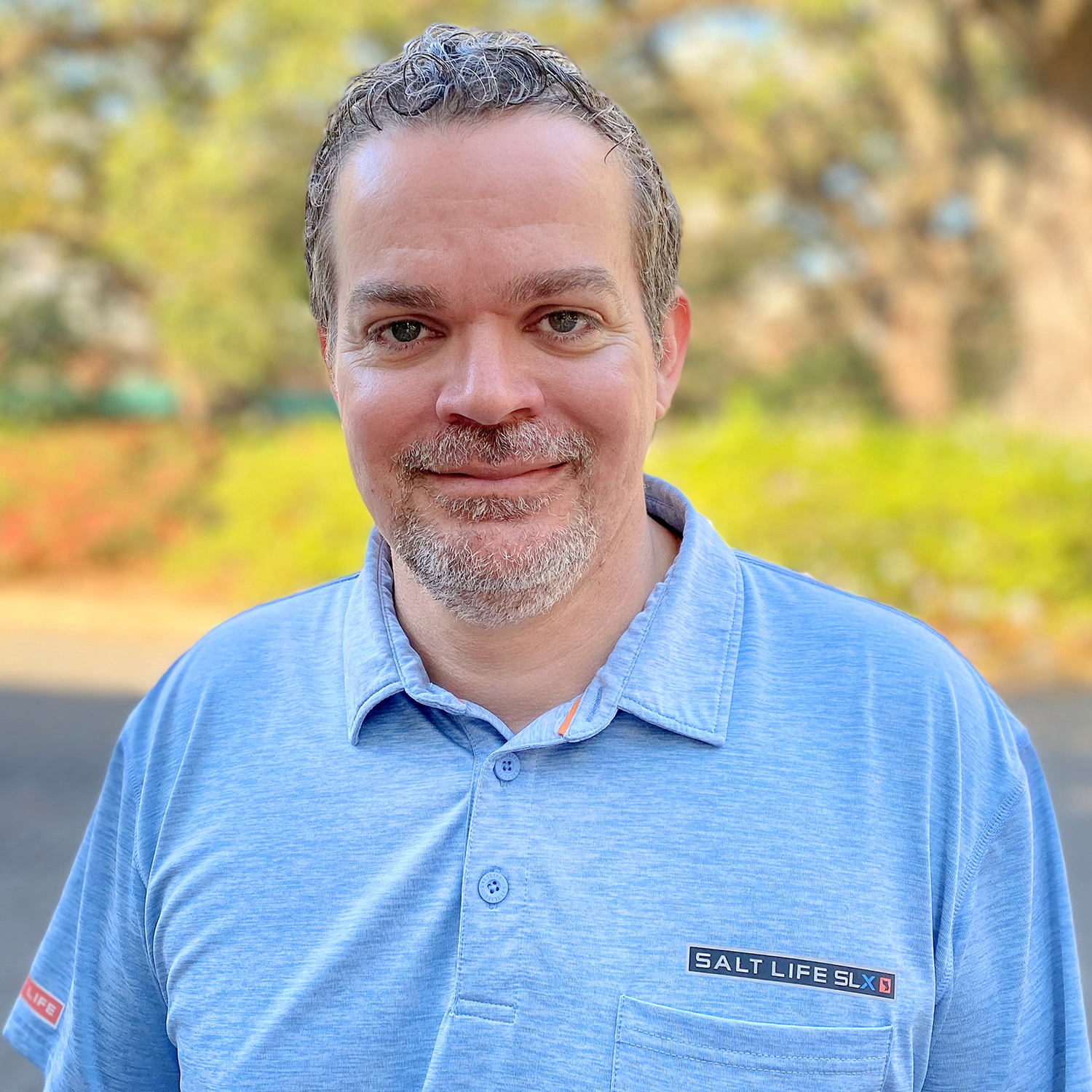
Jason Michaud
Relentless Ally
Savannah’s Superintendent
Senior Superintendent Jason Michaud never expected to end up in construction. If anything, his pivot from retail management to project management seems, at least on the surface, a complete about-face.
Jason’s decade of retail management experience was actually preparing him all along, instilling in him an innate sense of people-centered service and relationships as a foundation for project success. In Balfour Beatty, he found a leadership and behavioral framework that already valued the same qualities and empowered leaders like him to grow, develop and serve clients with unwavering dedication
In his 11-year construction career since, Jason has become one of Balfour Beatty’s top builders in the Savannah, Georgia metropolitan area, cementing his status as a Relentless Ally for our clients and partners. Across diverse market sectors, from elementary schools to municipal facilities to landmark hotels, clients have come to know Jason and Balfour Beatty as culture-setters – where everyone is empowered to pursue excellence, serve clients well and create the safest possible jobsites.
Starting in Safety
Jason first encountered Balfour Beatty’s operations while he worked as a temporary laborer on the sprawling Buckhead Atlanta family of projects, a mixed-use development district where our teams have maintained a near-constant presence as a construction partner since its 2005 inception.
Jason initially reported to a former safety, health and environment (SE) director and Brian Whetstone, now a senior superintendent on the LAX Automated People Mover project in California. Brian and other leaders took note of Jason’s enthusiasm for construction (a fact that surprised him as much as anyone) and soon brought him onto the team as a safety-focused understudy. Just a foot into the construction door, to be sure, but one that proved formative.
“I spent those four years working in safety asking constant questions, growing in my understanding of construction management, safety principles and the day-to-day responsibilities of project superintendents,” Jason recalls. “Eventually, I was acting enough like a superintendent that I set on the path to becoming one.”
In the years since, rising from assistant to now senior superintendent, Jason’s SHE foundations have given him a keen understanding of the Zero Harm principles that underpin Balfour Beatty’s Georgia operations. In fact, Jason sees a strict adherence to our Zero Harm ethic as a cornerstone of our service to clients, a core value never more evident than when building a K-12 campus like his current project, the Pulaski K-8 School Conversion for Savannah-Chatham County Public School System (SCCPSS).
“Especially with students on an active campus, our team must create a service-minded, Zero Harm jobsite culture among all trade partners, laborers and visitors,” Jason says. “We base that on our relationships with administration and staff. They know our safety plan because they’re an integral part of it. They know us by name and know exactly where our fences are. As servants and partners, we could do no less.”
Leading in Excellence
Jason is quick to add that relationships don’t just matter in the dynamic between contractor and client, but also between contractor and trade partner, superintendent and day laborer. By creating a healthy jobsite culture, where open communication is encouraged and mental health and wellness are prioritized, Jason and Balfour Beatty superintendents like him empower everyone to seek excellence, ask for help when it’s needed and ultimately continue our reputation as a top builder in Savannah.
Ultimately, relationships are not one-time events. Just as our client relationships require cultivation and maintenance over time, so do the most fruitful trade partner relationships. And with project leaders like Jason at the helm and Balfour Beatty’s people-first values on- and off-site, those trade partners seem to come back again and again.
“Especially in a market with specific safety needs like K-12 education, it’s important that we build trust and camaraderie with trade partners who really understand those needs and can meet our standards of excellent service,” Jason says. “We build those relationships to last, and as much as one half of our partners on the Pulaski K-8 project will be joining us on two future SCCPSS projects.”
Still, in a fast-paced market with a diverse range of project types, Balfour Beatty is always looking to expand our network of trusted trade partners and build lasting relationships. But that can sometimes lead to trade partners taking on new or more advanced scopes of work. For Jason, centering people, relationships and servant leadership is key to helping everyone succeed.
“Everybody on a jobsite wants to succeed, and as a leader I want to do everything I can to empower success as a standard of service to our clients,” Jason says. “If I’ve built a strong relational foundation with a trade partner, it’s easy to see when they’re struggling, address the issue head-on and find out how we can work together to improve together.”
Culture Creators
Culture. Servant leadership. Relationships. While these are certainly the foundations for client service and project success, Balfour Beatty teams and leaders like Jason also know how to leverage these principles into community fun.
On the Pulaski project, Jason and the team took time out of their busy schedules to have the 2024-2025 class of fifth graders sign a steel beam destined for the entry vestibule – a mark that will hopefully last in the students’ memories for as many years as the campus serves students.
Jason’s marks on his projects, clients and partners are just as lasting: projects built right and with pride and excellence, clients that know their values are understood and shared and partners that know we care about their development and success.
Read More
.jpg?sfvrsn=aaad9866_3)
